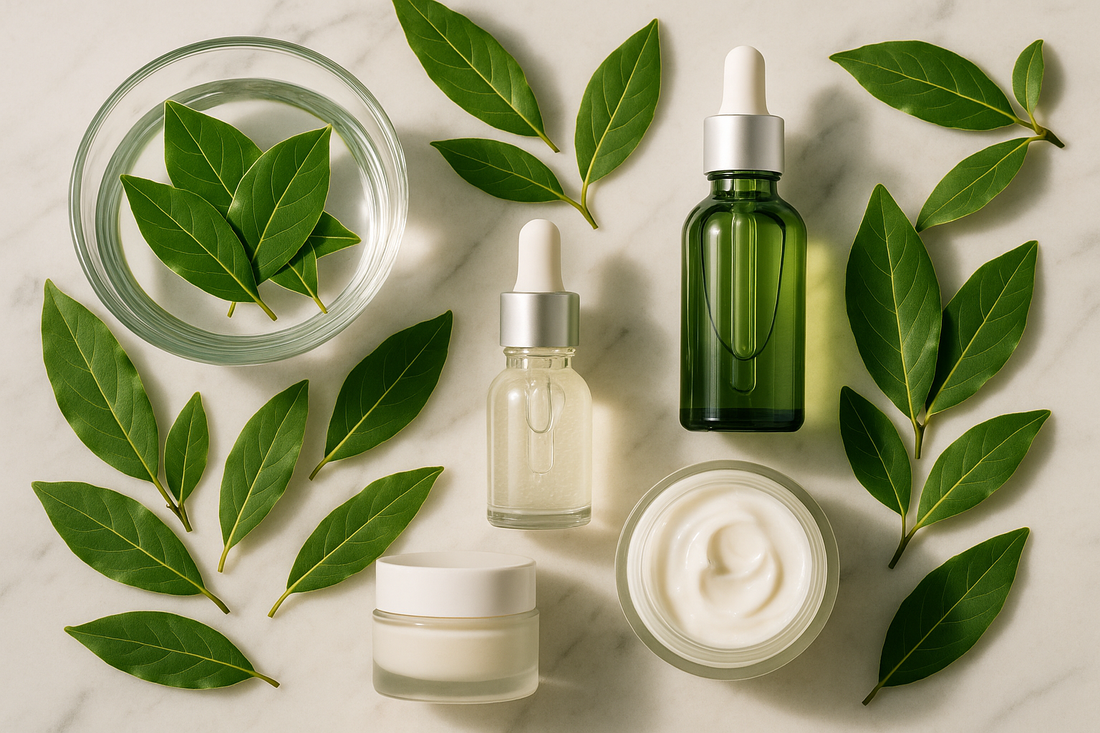
Bay Leaf in Skincare – The Subtle Alchemist
I love nature Series - 5
Bay leaf is the whisper in the kitchen, the green note in a poet’s garden—mild in scent, mighty in quiet transformation.
I still remember when i first read about bay leaves and what they could do for my skincare. I could not believe it! lol I had to do a lot of reading and that's when I even learned that there are different kinds of bay leaf and then I don't know why, that surprised me even more. You know, I grew up finding bay leaves in my beans, ok. lol My mom flavored our -from scratch- cooked beans with bay leaves, garlic, and a few other things. That led me to think...what kind of bay leaves were those? Probably the Turkish Bay Leaves (Laurus nobilis): Also known as sweet bay or bay laurel.
Origins & Essence From the evergreen Laurus nobilis, oval-shaped leaves with a mild, slightly peppery flavor, they also carry a herbal, slightly floral aroma—calm yet complex. In ancient Greece and Rome, they crowned the victors and honored the wise; in skincare, they offer their own quiet victory: balanced, nurtured skin.
Skin Benefits
-
Clarifying Touch: Mildly astringent properties help tone and refine the look of pores.
-
Antioxidant-Rich: Compounds like eugenol and myrcene defend skin against free radical stress.
-
Soothing Herbal Care: Can calm occasional redness and bring comfort to tired skin.
-
Botanical Harmony: Pairs well with other herbs and floral notes for both scent and effect.
But then I kept reading and found the Californian bay leaves, which are more potent with a minty taste. Also, there are some other varieties, such as Indian bay leaves, Indian Bay Leaves (Cinnamomum tamala), also called tej patta, which by that name "cinnamomum" we can guess it has something to do with cinnamon. West Indian bay leaves...Indonesian bay leaves... geez... I believe I read entirely too much on this topic... but these are all less common in Western cooking. So I just took a wild guess and thought probably less common in skincare too.
- Slender, longer leaves than Turkish bay leaves.
- Stronger, more pungent flavor with hints of eucalyptus or mint.
- Often preferred for dishes with bolder flavors or when a stronger bay leaf taste is desired.
I know something for a fact. I like what I found out on my research reading and I am definitely going to be using bay leaves on my formulations. I can't wait to see the results. I'm thinking serums with bay leaves and cloves... talk about a powerful botox from nature.
If you are ready "I love nature - 4" is here
